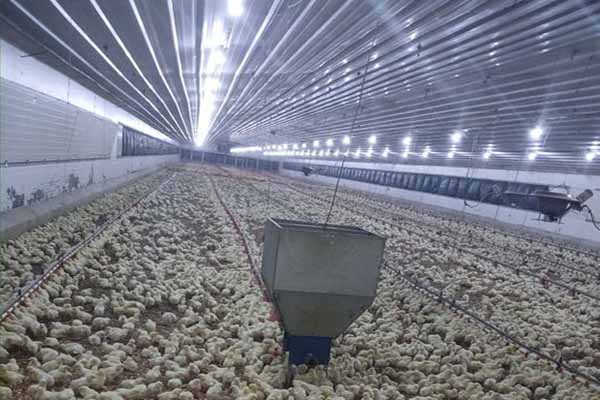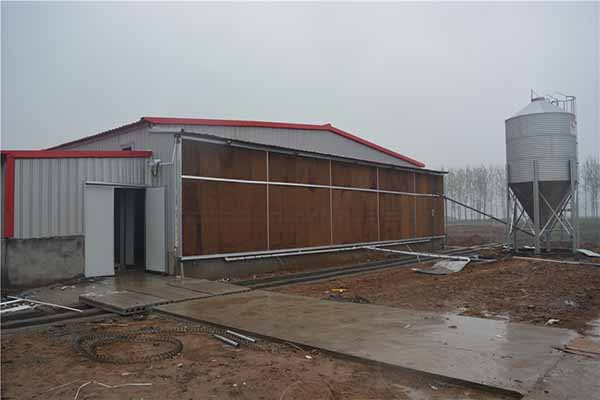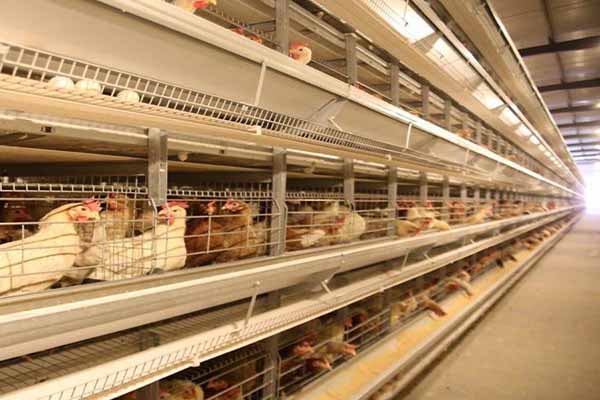The Impact of Temperature Control on Egg Production in Tanzanian Chicken Farms
Time : 2025-04-26
In the bustling heart of Tanzania, chicken farms play a crucial role in providing eggs to a nation that loves its breakfast with a poached or fried yolk. However, the success of these farms hinges on one key factor: temperature control. In this article, we’ll delve into how temperature management can greatly impact egg production on Tanzanian chicken farms, offering insights and practical tips for farm managers and owners.

Understanding the Temperature Factor
First things first, let’s talk about why temperature is such a big deal. Chicken, like all living creatures, are sensitive to their environment. The ideal temperature for a chicken farm ranges from 70°F to 80°F (21°C to 27°C). Any fluctuations above or below this range can lead to a decrease in egg production, poor chick development, and even health issues among the flock.
The Cold Hard Truth
When it gets too cold, chickens use more energy to keep warm, which means less energy for laying eggs. Not only that, but lower temperatures can also slow down the metabolism of the hens, resulting in a decline in egg production. In Tanzania, with its varied climate, ensuring that the farm stays within the optimal temperature range year-round can be a challenge.

Heatwave Hazards
On the flip side, when it’s too hot, chickens are stressed. They pant more, eat less, and become more susceptible to diseases. High temperatures can lead to reduced egg size, soft-shelled eggs, and even egg binding. It’s a no-brainer that a hot chicken is not a productive chicken.
Effective Temperature Management
So, how do you keep the temperature just right? Here are some practical strategies that Tanzanian chicken farmers can employ:
Insulation and Ventilation
One of the first lines of defense is to ensure that the farm is well-insulated. Good insulation prevents heat from escaping during the colder months and keeps the farm cool during the warmer seasons. In addition, proper ventilation is essential to regulate the air temperature and exchange stale air with fresh ones.
Use of Fans and Air Conditioning
In areas where temperatures can soar, using fans can help disperse heat and reduce the stress on the chickens. For extreme conditions, air conditioning units can be installed in critical areas like roosting boxes and feeding areas.
A Smart Approach
Farmers can invest in smart technology, such as temperature sensors and automated cooling systems, to keep the farm at an optimal temperature without constant manual intervention. These systems can adjust cooling or heating as needed, ensuring that the chickens are comfortable at all times.
The Financial Aspect
While investing in temperature control systems might seem costly, the long-term benefits often outweigh the initial expenses. A well-regulated temperat ure can lead to higher egg production, healthier chickens, and reduced costs related to medical care and feed consumption.
ure can lead to higher egg production, healthier chickens, and reduced costs related to medical care and feed consumption.
The Bottom Line
“It’s all about the bottom line, right?” says John, a seasoned farmer in Tanzania. “By keeping our chickens happy and healthy with the right temperature, we’re not just ensuring our profits, but also the future of our business.”
Case Study: The Green Egg Farm
The Green Egg Farm in Dar es Salaam is a prime example of how effective temperature control can transform a chicken farm. By integrating smart cooling systems and ensuring proper insulation, the farm has seen a 15% increase in egg production. “We’re not just laying more eggs; we’re doing it with less stress and more happiness for our chickens,” says the farm’s manager, Jane Mwakika.
Conclusion
Temperature control is a critical factor in egg production on Tanzanian chicken farms. By implementing the right strategies and technology, farmers can create an environment that promotes health, productivity, and profitability. It’s not just about the temperature; it’s about the future of Tanzanian agriculture and the daily bread (literally) of millions of Tanzanians.
Remember, the key is to find that sweet spot where the chickens are content and the eggs are flowing. It’s a delicate balance, but with the right approach, it’s definitely achievable.











